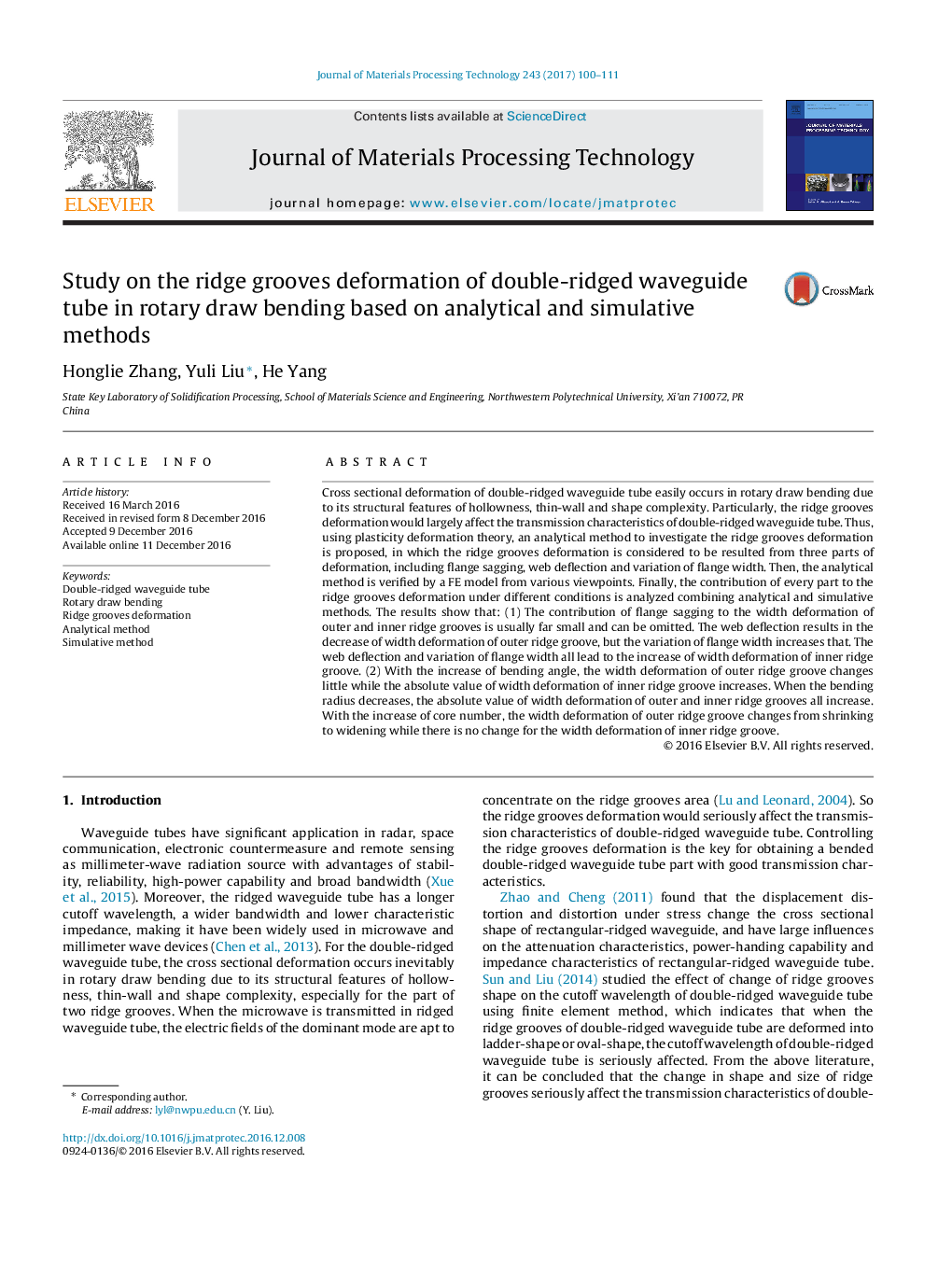| Article ID | Journal | Published Year | Pages | File Type |
|---|---|---|---|---|
| 5017919 | Journal of Materials Processing Technology | 2017 | 12 Pages |
Abstract
Cross sectional deformation of double-ridged waveguide tube easily occurs in rotary draw bending due to its structural features of hollowness, thin-wall and shape complexity. Particularly, the ridge grooves deformation would largely affect the transmission characteristics of double-ridged waveguide tube. Thus, using plasticity deformation theory, an analytical method to investigate the ridge grooves deformation is proposed, in which the ridge grooves deformation is considered to be resulted from three parts of deformation, including flange sagging, web deflection and variation of flange width. Then, the analytical method is verified by a FE model from various viewpoints. Finally, the contribution of every part to the ridge grooves deformation under different conditions is analyzed combining analytical and simulative methods. The results show that: (1) The contribution of flange sagging to the width deformation of outer and inner ridge grooves is usually far small and can be omitted. The web deflection results in the decrease of width deformation of outer ridge groove, but the variation of flange width increases that. The web deflection and variation of flange width all lead to the increase of width deformation of inner ridge groove. (2) With the increase of bending angle, the width deformation of outer ridge groove changes little while the absolute value of width deformation of inner ridge groove increases. When the bending radius decreases, the absolute value of width deformation of outer and inner ridge grooves all increase. With the increase of core number, the width deformation of outer ridge groove changes from shrinking to widening while there is no change for the width deformation of inner ridge groove.
Keywords
Related Topics
Physical Sciences and Engineering
Engineering
Industrial and Manufacturing Engineering
Authors
Honglie Zhang, Yuli Liu, He Yang,
